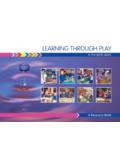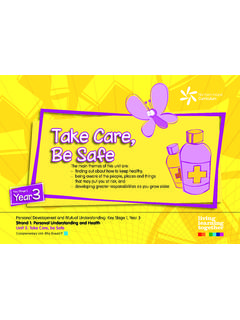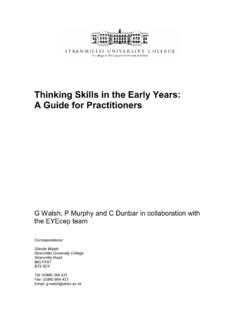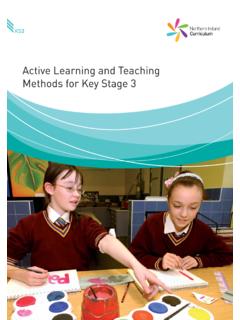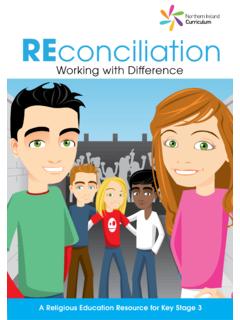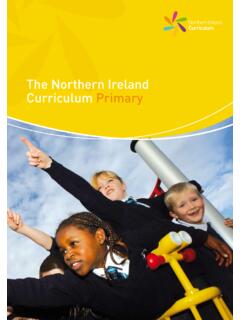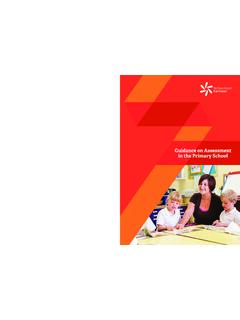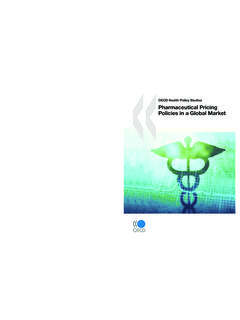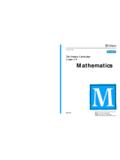Transcription of Who Am l - Curriculum | CCEA
1 who am l ?The main themes of this unit are self-awareness and awareness of others. An acceptance of self is important for maintaining a realisitic sense of self-esteem, whist being aware of and accepting differences in people reinforces our own uniqueness. Through recognising the value of reflecting on their current situation and setting targets for the future, children are encouraged to develop an insight into their Development and Mutual Understanding: Key Stage 2, Year 6 strand 1: Personal Understanding and HealthUnit 1: Who Am I ?Complementary Units: Working at Harmony Dealing with FeelingsAll Ideas are Valued BoardStart a notice board in class on which children, staff and parents can contribute to the sharing of ideas, their talents and thoughts.
2 This can open up possibilities for both the children and staff. Also use the board to communicate what is happening in class, the successes experienced and any information you need to share. Try Your BestPersistence is an important disposition for children to value. Use the phrase I m glad you decided to try as a way of converting a potential failure into a success. Record specific occasions and send a copy home to parents as a way to signify that you value the children s persistence. Teaching approachesI Need a Hero!Display images of role models for the children in class. Use images of individuals past and present who showed that they were able to rise above difficulties and live life successfully in the face of adversity.
3 Having images and quotes from these people can inspire and encourage the children to model themselves on these people. Also, talk about your own accomplishments and achievements with the class. Debate ItChildren can learn lots more about themselves and their relationships with others when they have debates about moral concepts. Use real examples from the class and the community to debate. Ask the children to work out ways to deal with the problems. Examples may include competition (losing a game), fear (bullies in the playground) or trust (taking things that don t belong to you).Key ExperiencesTheir self-esteem and self-confidence:- feeling positive about themselves and developing an understanding of their self-esteem and confidence; and- becoming aware of their own strengths, abilities, qualities, their achievements, personal preferences and on Key Stage 1 Moving towards Key Stage 3 Personal Development Key Concept: Self-awarenessWorking at Key Stage 2 Their self-esteem, self-confidence and how they develop as individuals:- developing self-awareness, self-respect and self-esteem;- identifying their current strengths and weaknesses.
4 - developing an insight into their potential and capabilities; and- identifying and practicing effective learning strategies. I can ask for what I need. I am cooperative when working with a group. I am listened to and taken seriously in class and in a group. I can tell you about some of my strengths and weaknesses. I am beginning to recognise what I need to improve on. I can show how I am responsible for my own learning. I understand that the majority view is not always right. I accept myself for who and what I am. I can stand up for what I think after listening to others viewpoints.
5 I can disagree with someone without falling out with them. I can tell the difference between showing I am proud or boastful. I know how to face challenges so that they do not overwhelm me. I have the confidence to cope with challenges I developing their self-esteem and self-confidenceProgress in learningKey Stage 2, Year 6 strand 1: Personal Understanding and HealthWho Am I ?2 Learning intention:Recognise uniqueness and value personal qualities and abilitiesLearning togetherOur Class GoalsEnsuring that children have an understanding of their responsibility towards their own learning encourages them to set long, medium and short term the use of: study buddies; goals/targets, breaking them into manageable/achievable steps; and effective ways to manage time - calendars, daily schedules, weekly target viewers, towards group targets in the first instance.
6 Identify these jointly with the children. Then progress to allowing the children to identify their targets learn feltproudwhen need am learning target is want to improve need help enjoyed learning how felt good when Skills and Personal Capabilities by the end of Key Stage 2 Self-managementEvaluate what has been learnt and compare approaches with others;Make links between learning in different contexts;Become more self-directed by working independently or with a group; Learn ways to manage own time;Seek help from a variety of sources;Work towards personal targets identified individually or jointly with the teachers; andBe more confident in the knowledge of personal strengths and , problem solvingand decision-makingShow the ability to use memory strategies to deepen understanding;Identify and order patterns and relationships through a range of strategies such as grouping, classifying and reclassifying, and comparing and contrasting;Make and test predictions, examine evidence and make links between possible causes and effects;Discriminate between fact and opinion and question the reliability of evidence.
7 Managing informationBe able to ask deeper and wider questions to clarify a task and to plan and set goals;Begin to challenge conventions and assumptions; Be able to classify, compare and evaluate information, and to select the most appropriate methods for a task;Develop methods for collating and recording information and monitoring progress on a task; andHave a sense of audience and with othersBecome more independent in social and interpersonal skills;Show that they can work in different roles in a group and take responsibility for appropriate tasks;Be willing to help others with their learning;Understand and learn to respond to feedback; andWork with peers to reach agreements and begin to manage more than one point of view;Examine options and weigh up pros and cons;Try alternative problem solving solutions and approaches; andUse different types of questions systematically and with creativePose questions that do not have straightforward answers and seek out problems to solve and challenge the routine method;Use all the senses to stimulate and contribute to ideas.
8 Experiment with different modes of thinking (for example visualisation);See opportunities in mistakes and failures;Learn from and build on own and others ideas and experiences;Value other people s ideas;Experiment with objects and ideas in a playful way; Make ideas real by experimenting with different ideas, actions and outcomes; andBegin to develop value judgments about the merits of their the Curriculum : Connecting the learningUsing ICT to create an advertisement relates directly to the ICT Accreditation scheme. See Learning from others. Helping children to make good choices about who they accept as learning role and phrases I will hear and use Positive the children to become more self directed and learning ways to manage their own Arts and CapabilitiesEvaluate4 Activity 1 Self-acceptanceSimilarities and differences between individuals are discussed to highlight uniqueness and 2 Self-portrait Identifying who they are and who they want to become are explored through 3 IdentityChildren explore their perceptions of what shapes them and who supports 4 What s it worth?
9 The children s personal aspirations are explored through an auction activity. Activity 5 Take a closer lookChildren use art to help them understand the importance of taking time to reflect on and take stock of 6 Proud or boastfulChildren recognise the variety of achievements that they can accomplish in a positive activitiesChallengeSelf-awareChoicesAspi rationsAcceptanceGoalsOn targetFocusedViewpointsFact, opinion5 Learning activity 1: Self-acceptanceSUGGESTED SUCCESS CRITERIONWe will be able to recognise and name our own and each other s positive CONCEPTWe are all unique. There are no two people exactly alike, and it is important to avoid comparisons with others.
10 Acknowledging and accepting our differences reinforces our uniqueness and helps build TO NOTESend home a copy of Resource A to parent(s)/carer(s) to keep them informed about the activities their children will be completing as part of this YOU NEED- Large box to represent a treasure chest - Speaking object- Letter to Parent(s)/Carer(s) (Resource A)WHAT TO DO- Treasures- Circle Work- Let s TalkTreasuresSeat the children in a circle and place a large box in the centre. Explain to them that this is a treasure chest that will be filled with all of the things that they can do. To begin, ask each child to write on a small piece of paper one thing that they can do well (suggestions include:6l can r)
